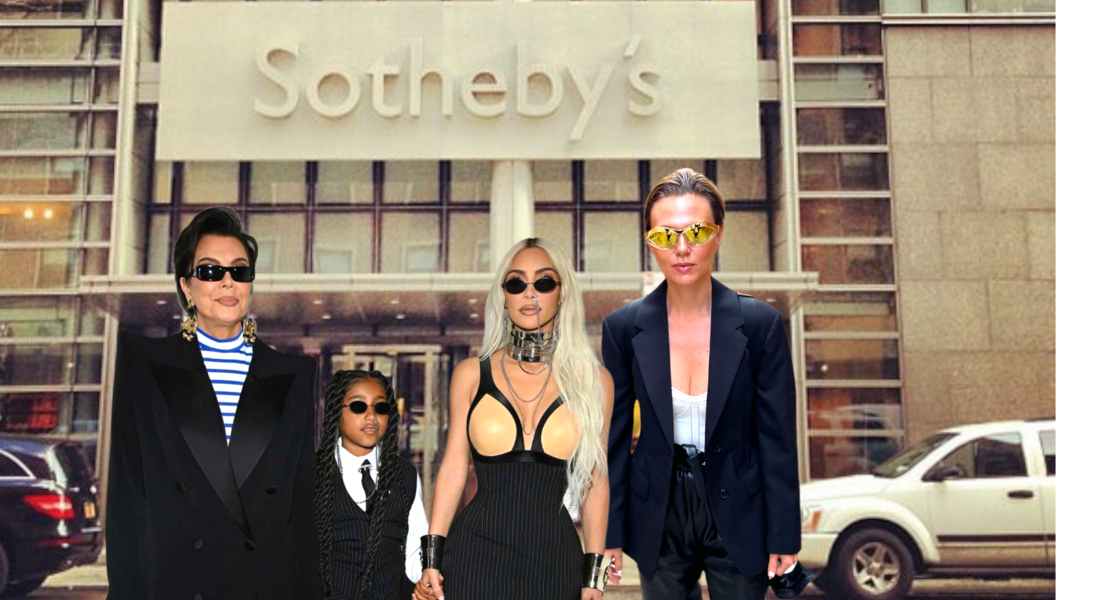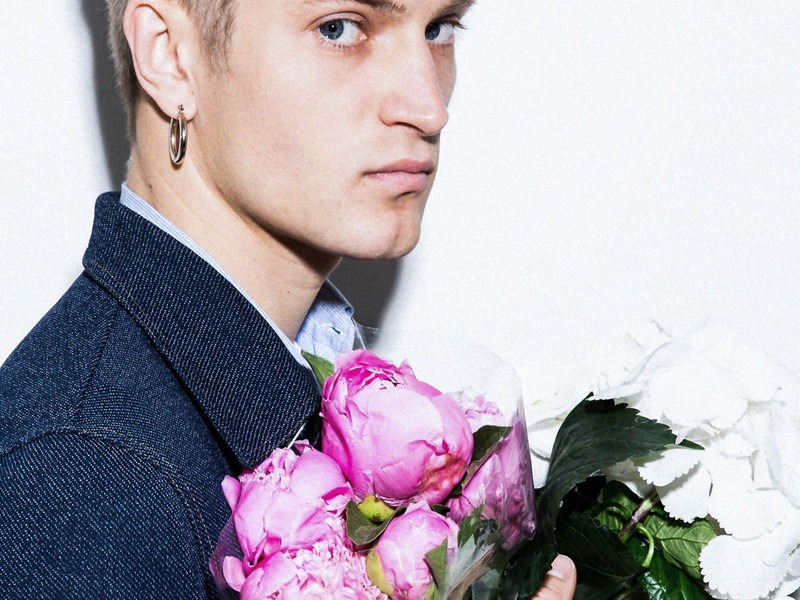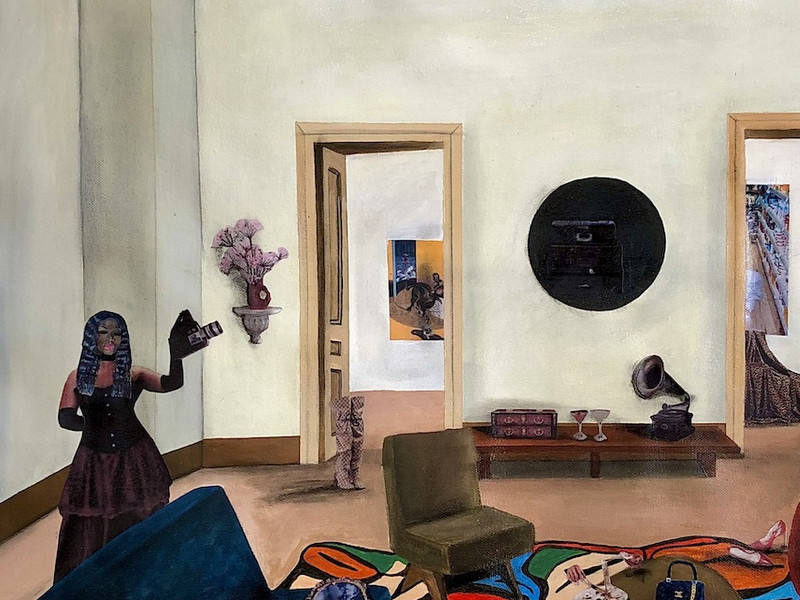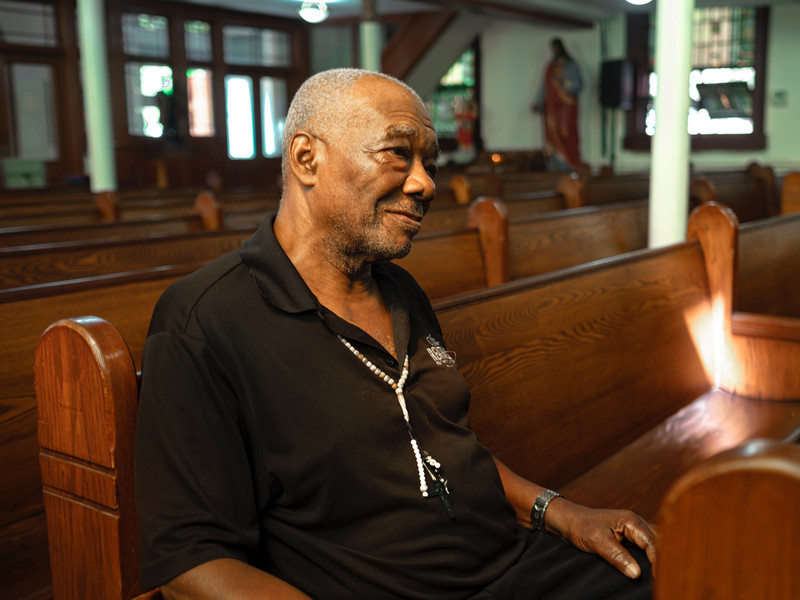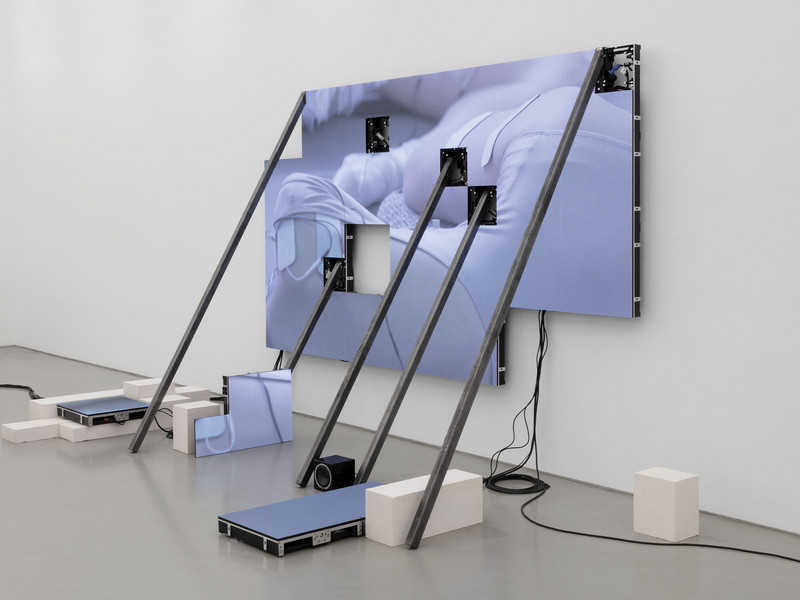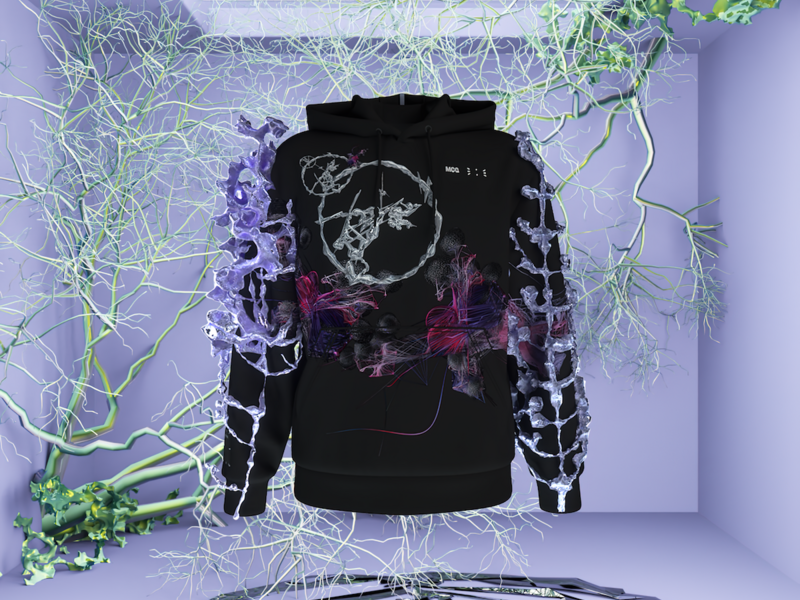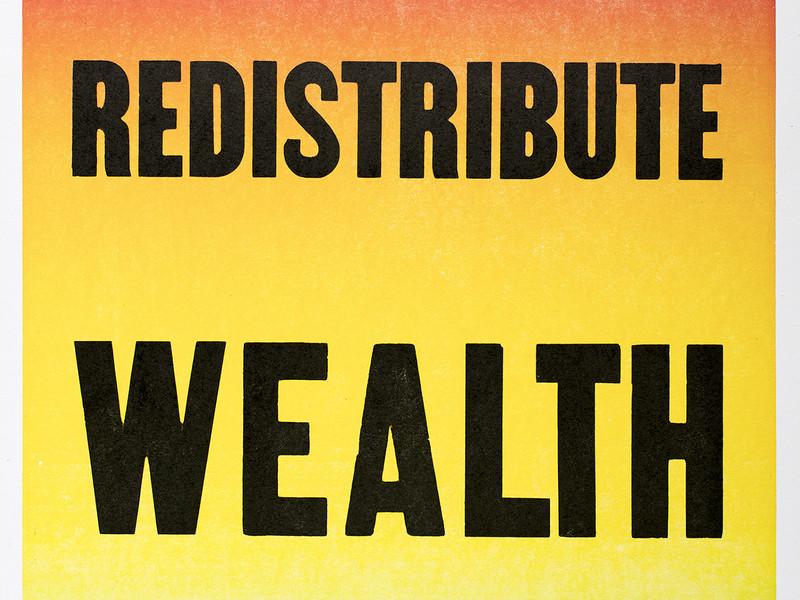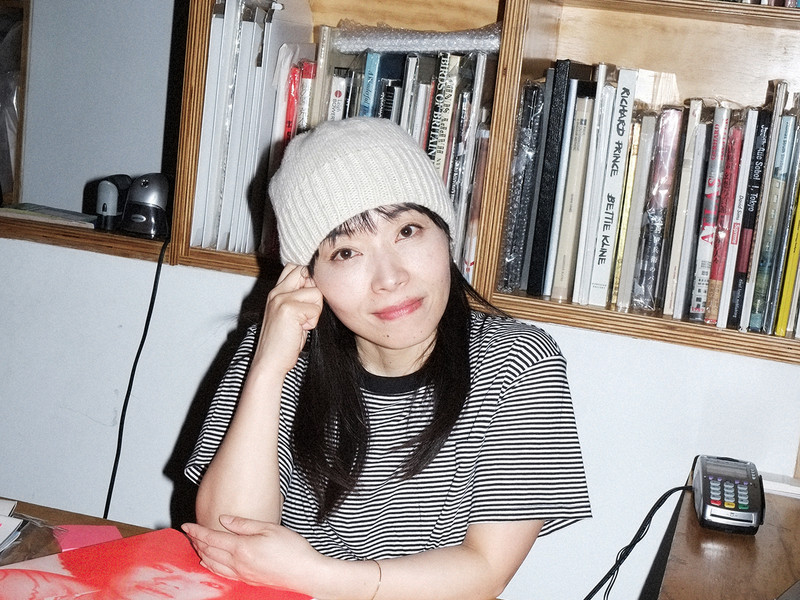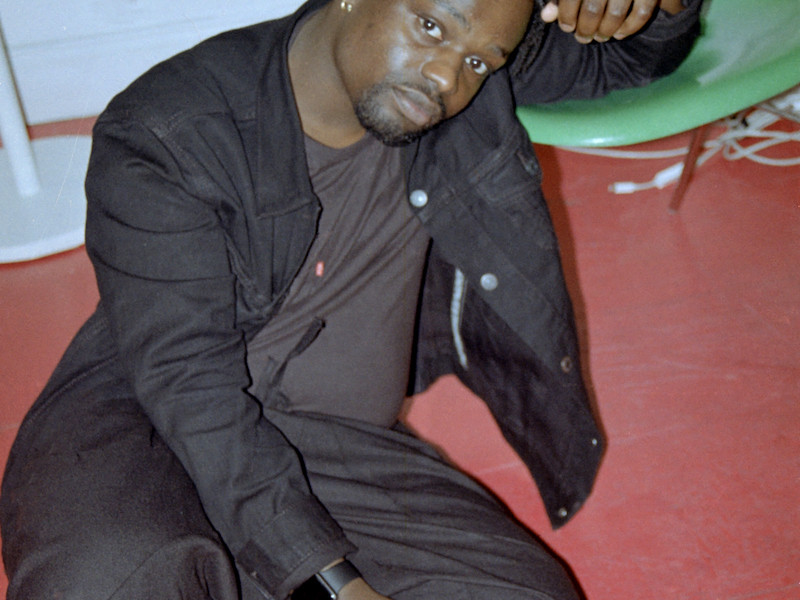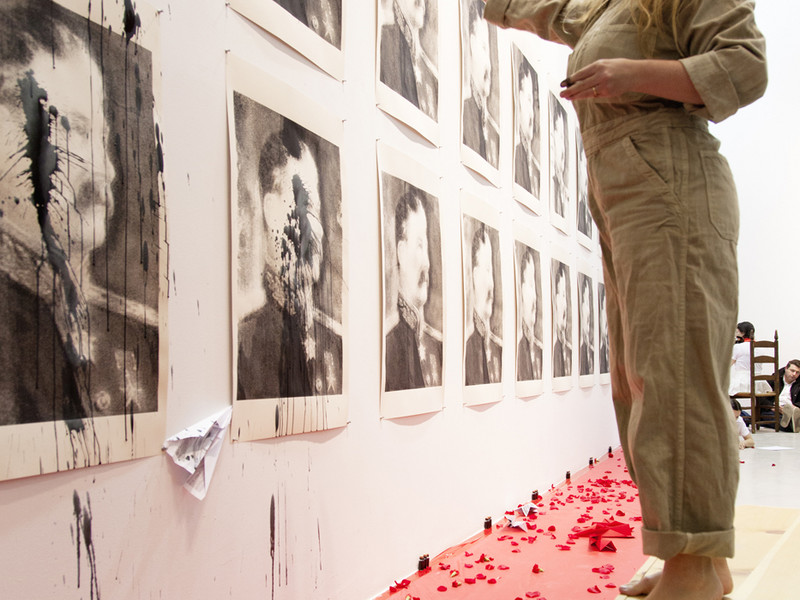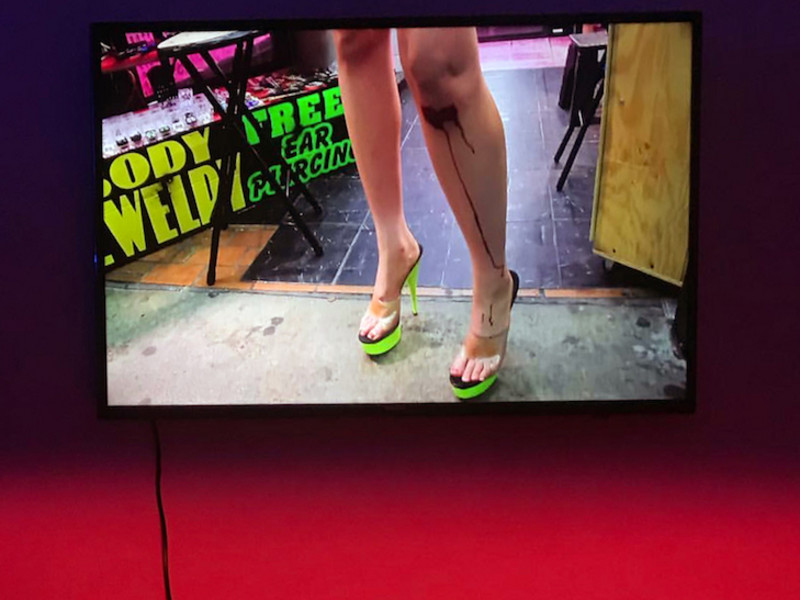The Algorithm and Jerry Gogosian
But at the same time, it's accessible. I'm a kid from Newark, NJ, that writes about art, so in a way, Jerry Gogosian’s Instagram is giving me a glimpse into a world that I honestly don't know and that I'm getting to know, sometimes through her memes. I touched base with Hilde Lynn Helphenstein, the artist who created the character and social media handle of Jerry Gogosian, before the current exhibition she curated at Sotheby's entitled Suggested Followers: The Algorithm is Always Right, which is open until October 9th.
EO— Can you expand on this idea of how your memes are speaking to an insider perspective in the art world while at the same time highlighting an industry that is elusive and unknown to most people who are not a part of it? In my opinion, You are creating pathways to understanding with some artistic abstraction and satirization.
JG— It's funny because the art world is this place where no matter what position you hold in it, you're always going to feel like you're an outsider. That goes from the bottom to the very top. I started from the bottom and scrapped my way through the art world, always feeling like I didn't understand it. I spent two years at an anarchist art school in Norway, and there was no theory there. There was no art history. It was a pure making type of school, hence the anarchism. When I got to San Francisco Art Institute, I would attend lectures daily and sit through very long critiques. I would leave school, and after attending one of these lectures, I would eventually cry because I was like, "I don't understand this." That made me work harder and become that student who sat at the front and asked all the stupid questions, no matter how obvious. I had a life-changing event happen about four years ago where due to an illness, I was forced to be in bed for a year, basically nine months, and I had nothing to do but play around on the Internet on my phone. I started looking at memes and realized I was looking at memes that 13-year-old boys make because young boys are responsible for most of today's memes. It was funny because I could take this meme that a middle school boy made and put art language in this meme, and it would completely translate.
So it started very simply. This meme is a joke made by this horny little boy, and it completely works for the horny art world. I remember my first interview; somebody asked me what I thought I was doing, and I just said I'm not doing anything new. Obviously, I'm not, but the Caesars thumbs up versus thumbs down meme was like the ultimate meme. Everybody knows what it means, so it's interesting because it's essentially a new form of language. People can take it seriously, or they can mock it. I've seen people go both ways. Some people are like, "Oh my God, we're getting Dumber and Dumber, look at memes, blah blah blah, and I get it, but then if you can read a meme, there's a level of social intelligence and cultural awareness that comes into play to be able to read and comprehend.
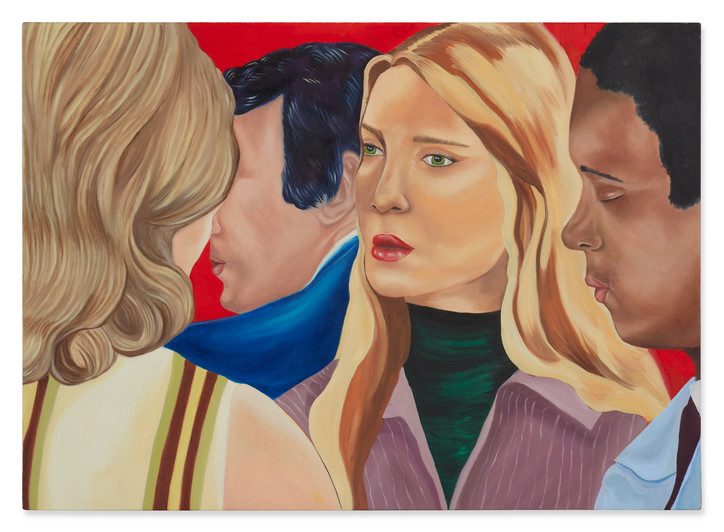
Gigi Rose Gray, 'Ordinary People' 2022
So, you may not know this about me, but one of my nicknames on social media is Meme Lord Flizzy. It's for my secret burner Instagram that I follow a bunch of artists on. It's my secret art insta. It has like three followers, but it's created just to be voyeuristic. It also contains a private archive of memes I've been working on for the past three years. I made the name off of a meme on the Internet in 2020 that I liked. The meme was set on the Titanic and appropriated one of the iconic scenes in the movie when the cruise was sinking. It portrayed "Meme Lords," or people who make or distribute memes as a violinist playing music at the fall or collapse of capitalism or humanity or society, represented by the Titanic. In 2020, it resonated in the dystopian pandemic and the election and all the uncertainty and gloom in the popular conscience. So, I christened myself Meme Lord Flizzy.
I say all that to be like memes really matter to me, I'd like to think I care about them more than the average person. Especially when talking about memes in relation to high art versus low art. I think memes, for a lot of people, fall into the category of low art or just social media stuff. Things that they scroll through on their TL. But to me, there's a lot of potential in memes to be more than that. As you mentioned, many of the processes you use when looking at a meme are the same thinking process as when looking at a good piece of art in a gallery or museum. I'm also curious about your process of creating these memes. I heard that you put out three memes a day. Is that something you stick to? Is there a meme writers' room that you got going on?
I used to make about three memes daily when I was in bed with nothing to do. Sometimes I go a week without making something, or sometimes I wake up in the morning, and I've got the right amount of caffeine, and I'll make like six. There is no rhyme or reason besides I have a collection of like good images that I use, and I sort of rattle them off. I don't make the images in the memes as much as I used to, mainly because I don't have the time, and honestly, I'm not super interested in making memes anymore. I like them, but there are other things that I want to do. Also, sometimes I get social anxiety where I can't even open my Instagram. I don't want to look at or read the hateful comments. So the making of the memes is not premeditated, is what I'm saying. Something comes up, and I make it really fast. My only writer's room is my boyfriend, and I have a very close friend who is kind of mean to me and will tell me that's not funny or you need to fix that.
I asked about the writer's room because I currently work for an advertising agency. There are times when I'm with a group of creatives, and we are throwing around ideas for memes for brands/clients in sort of an advertising writers room type of setting.
I want to get a bit more into memes as art because I think that conversation needs to be talked about more. I was amazed a couple of months ago when one of my bosses at work sent me this article where the 1st meme ever was sold as an NFT for a couple hundred thousand dollars. It's happened many times at this point. I think it creates an opportunity for memes, especially the ones where you can track the cultural impact. So, I'm curious if you would ever sell your memes as NFTs. I also want to know whether you consider yourself an artist by making these memes.

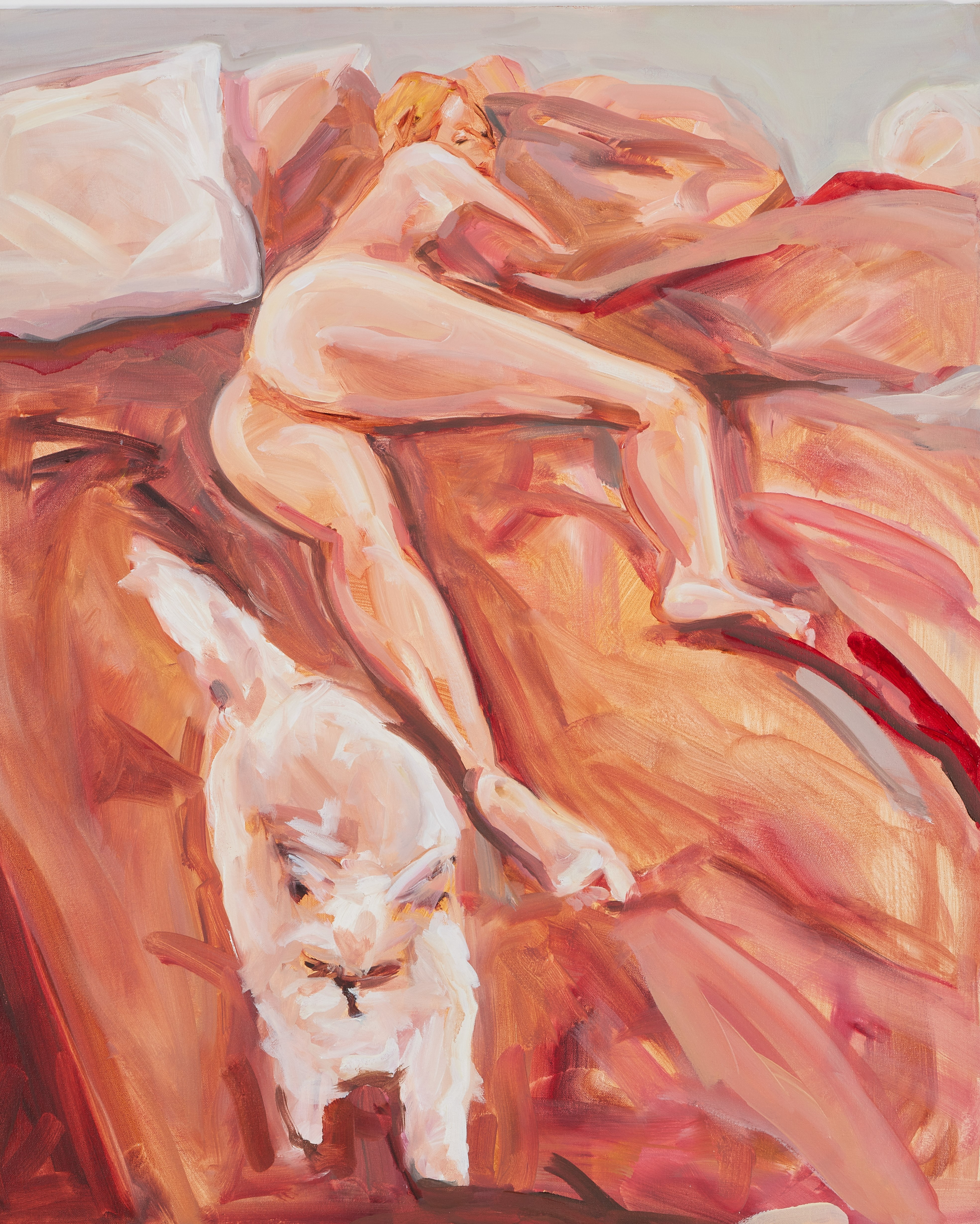
William Buchina, 'Three Thousand Shoes #9' 2022; Avery Wheless, 'comfortability exposed' 2022
I am an artist. I'm a multimedia cross-disciplinary artist if you will. Several people have asked me to sell my memes as NFTs, and I have said no until now because I see many NFT projects as Ponzi schemes, and until I see an actual valuable use case for an NFT, I'm unable to switch my perspective. I listened to this great podcast, and it was two people sparring about NFTs, and these were not people from the art world. These were people from other sectors of the business world. There's this guy that was arguing that at the present moment, there is no use case for an NFT beyond people doing these get-rich-quick schemes. He completely destroyed this other guy who was also intelligent and made good points. I've interviewed the Winklevoss twins when they were starting Nifty Gate. I've been in a million clubhouse chats over memes as NFTS. I'm close friends with some well-known NFT artists, and I've gone down the rabbit hole because I would love to get rich quickly but also want to understand it. As of right now, it just to me it doesn't seem right for me. Still, I know that eventually, as the metaverse begins to replace "reality," I'm aware that digital assets and digital art will be incorporated into those spaces. Hence, I know that what I'm saying will be obsolete at a certain point.
I hear that. I think NFTs enable the possibilities to remove the barriers between ideas of high art and low art, especially for digital-based work. It reminds me of a couple of years back when Richard Prince was doing that thing where he was taking screenshots of peoples' Instagram, blowing them up, putting them in galleries, and selling them for large sums of money. I remember the outcry and the conversation about appropriation. Still, for me, it felt like he was paving the way for even a screenshot to exist and be commercially successful in the art market. The whole idea of seeing gallery shows and museum shows dedicated to memes is something I don't think is 100 years away. I think that will happen more in the next decade as people start to understand and think about them more.
But speaking of gallery shows, you have an exhibition currently in motion with Sotheby's. This artist, I know William Buchina is in it as one of the 20 artists that you collaborated with for this exhibition. Tell me about this exhibition. What is the concept behind the show?
As of right now, I'm framing it as I did not curate the show. Jerry Gogosian collaborated with the Instagram algorithm to curate the exhibition. That's why this show is called Suggested Followers: The Algorithm is Always Right because I know how people are finding art right now. They're finding it by scouring the Internet, and they're like, "oh, so and so follows this person. I better follow this person," and it starts to create a web of people that like the same kind of work. In my suggested followers, I can see a very distinct difference between what the algorithm serves up to my private Instagram, where I just like my actual friends' works, versus what the algorithm serves up to Jerry Gogosian. It's because of the people that follow Jerry, everything from blue-chip galleries, major art institutions, and the biggest collectors and curators. The people that are then put forward to Jerry have to be people floating within those circles somehow, so I thought it was interesting to use the algorithm and let Jerry curate a show. To me, it's interesting when you take your hands off the wheel and let the algorithm decide for you and when you do that, it's like your Spotify, where it gives you new suggested songs every week. Some weeks it's off, but I would say most of the time. Spotify lately has been like hitting like 90% of the time.
But that's how people are finding art now, and I don't place a moral judgment on it, whether it's good or bad. It just is. It also references hustle culture. Some people are anti-hustle culture, but I wouldn't be where I am if I didn't hustle my ass off. And l if somebody gets success via Instagram, good for them. Also, there's this whole other universe, my boyfriend and I call it the other art world. There are these people that have hundreds of thousands of but are people whose names you and I don't know. However, they're real artists making real things, but they don't ascribe to being part of the art world, and it's so fascinating to see that happening and how it's working for them, and they're making money.
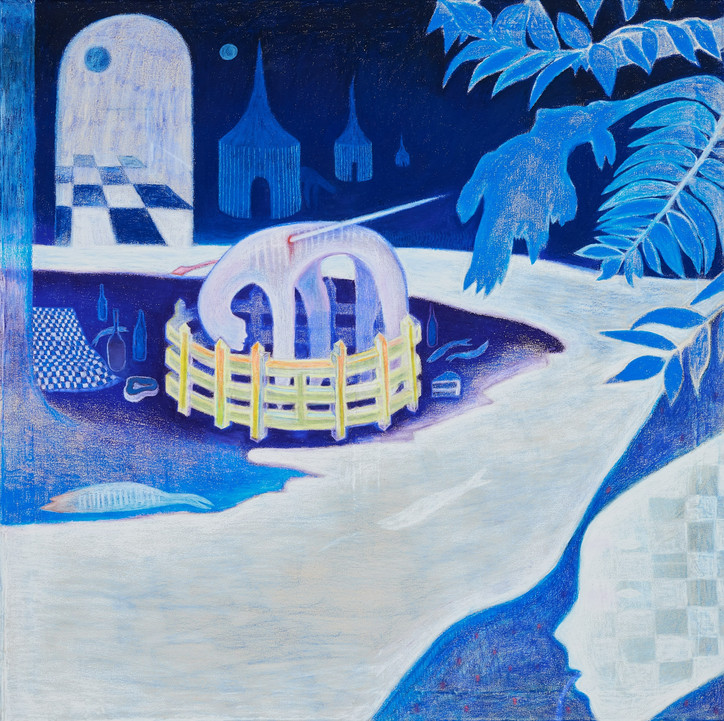
Ronan Day-Lewis, 'It's Okay to Eat Fish Cause They Don't Have Any Feelings' 2022
So I'm curious, is Hilde Jerry Gogosian? Is Jerry Gogosian your alter ego, or is it purely satire?
I would say the primary medium I work in is as a writer, and I think of Jerry as a character I've written. Jerry is meaner, wittier, a little more heartless, ruthless, and wealth-obsessed than I am. On the other hand, Hilde is very emotional, reflective, and, at times, philosophical. I had a gallery for two years in Los Angeles, and I curated and wrote for every show, and I love to curate, but I feel like this is the time of my life when I want to be an artist. I look at using Jerry to curate this show, as a work of art, as opposed to me being the curator, if that makes any sense. Jerry Gogosian is this character that I've written and created, and Jerry is status-obsessed, wealth-obsessed, but that's not the art world that I am in, and that's not the type of artist that I personally support. I collect and support artists of all kinds in interesting philanthropic ways. But I'm not like, here's a bunch of money and a show at David Zwirner. I don't necessarily view that as supporting artists. I will probably continue to curate exhibitions. Things will likely come up, but I don't want to be a full-time curator at all at this point in my life.
I think that idea you brought up of curation as a type of art is cool. I feel many artists are like “I am an artist and a curator”, but you don't see it happening as much the other way around. I'm kind of new to this curation thing. I have the first show I'm curating in October, but the idea of curating as messaging interests me. You're not creating the works, but by putting them together in a particular way, you're conveying a larger story. By putting these images together, you're almost creating a collage of these different visual experiences you want viewers to have before leaving. You can see it as a larger collage of all these various artists. You are not creating something tangible or physical, but a creative act is going down to me. So, when you said you're curating this show as Jerry as a form of art, it makes sense to me because I believe an argument can be made for curation as its own art form. To me, it's sort of looked at as a more academic pursuit in people's eyes.
I agree with that. Every show I curated when I had a gallery was based on a poem that I had read or a film that I had watched, and then I took something profound and philosophical from that. From there, it was almost like a manifestation where suddenly, if you have a red car, you start seeing all these red cars. So suddenly, I'd begin to seeing the poem in different artists' work, and that's how I would put shows together. After studying fine art for seven years, I purposely strayed away from being academic because, first of all, a lot of academia within the context of the fine art world isn't very real. Anything could happen, the United States could implode, and in 1000 years, anthropologists can start digging around and be like, "oh, we've been finding all these signs, and we've translated them, and they say footlocker, this must have been the art of their time."
We really don't know, so it's impossible to say. The only thing we can do now is act out of love and passion and take the messages of people we feel share the values and ideas we share, dialogue, and collaborate with them.
